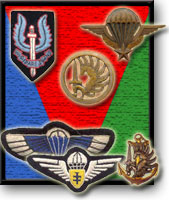Counter Insurgency Warfare 1945-2005
The idea that the end of WW2 would mean that the world would have peace was, as we now know, a flawed one.
Many nationalist movements (some communist, some not) saw the degree of war weariness of the old colonial Western powers, the change from a wartime leadership to a peacetime one in those countries and the lack of cohesion this produced both in terms of leadership and policy. Also the fact the most of these countries could not afford the expeditionary forces necessary for re-establishing control over their overseas empires. They took their chance and started to push for independence through overt political and covert military means.
The returning powers, struggling to rebuild their economies at home, had to enter into the political process to buy time until they could muster enough troops to send overseas and re-conquer their possessions.
The old powers, still thinking that all would be as it was, struggled to comprehend politically the scale, aggressiveness and desire of these new nationalism/independence movements. Perhaps worse was the fact the military had no text book for fighting this new style of warfare, so they did what every army has done - they fought it as they had their last war. But the operational theatres we not the rolling countryside of the North German Plain or the Western Desert, or the Normandy hedgerows, they were the alleyways of the kasbah, or a jungle village or a cell of 4 activists. The enemy wasn't readily identifiable nor would stand and fight. The military (at the start anyway) made the fundamental error of underestimating their enemy - at all levels. An unforgiveable arrogance and military stupidity of the highest orderl.
The battle against these groups gave us a new warfare - counter insurgency, and with very few exceptions almost all modern wars/police actions have started as counter insurgency operations. Writing in 1962 Commandant Trinquier ( a veteran of the French Indochina and Algerian Wars gave this type of warfare the name "Modern Warfare").
Yet over time the military managed (sometimes through design, though usually through the vision and determination of a small number of insightful soldiers) to form units that took guerilla warfare to the guerilla, that ran deniable operations into neighbouring countries (sometimes with but mostly without permission) and generally showed that old dogs can learn new tricks and if fully backed with the political and popular support of the country can win.
I would like to show here some of the units that are generally held within military circles to be prime exponents of the art of counter insurgency / low intensity conflict. The names of some of these units will include names of countries now renamed after independence or other circumstances. They are given in their original form purely for historical accuracy, no political comment is implied in any way, shape or form.


